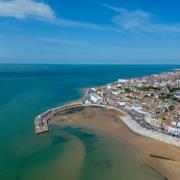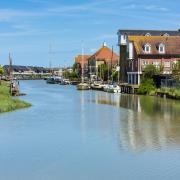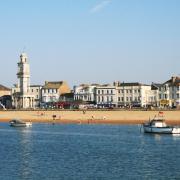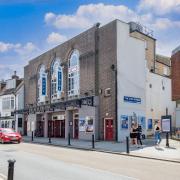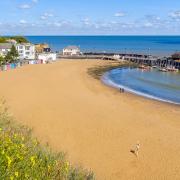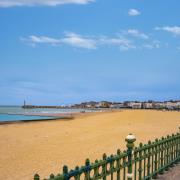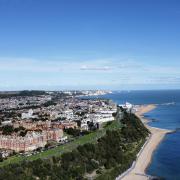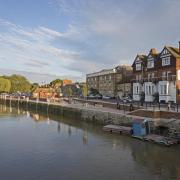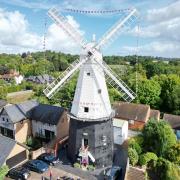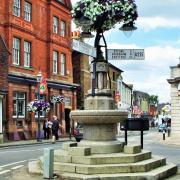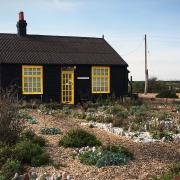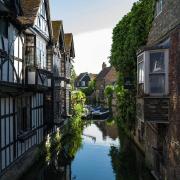From its literary links to its cricketing history, this riverside town has plenty of surprises to discover

1. Name change
It’s next door to Tunbridge Wells but it’s a separate town, it’s pronounced ‘Tunbridge’ but spelt with an ‘o’, and to make things worse it was called Tunbridge with a ‘u’ until 1870. It’s easy to see why this medieval market town on the banks of the River Medway can cause confusion. Originally named Tonebridge, and far older than its spa town neighbour, this small but bustling West Kent community is used to the odd mix-up.

2. Ancient castle
Built on land gifted to a Norman noble family by William the Conqueror, the history of Tonbridge Castle goes back some 900 years. Offering a strategic advantage at an important river crossing, the first castle was a simple ‘motte and bailey’ structure built from timber, set on a mound of earth and protected by a ditch. It was quickly replaced by a basic stone fortress and altered and extended many times over the years. Now the castle ruins are a visitor attraction and their lovely riverside gardens are used for all sorts of community events.
3. Famous school
Tonbridge School, the famous independent school for boys, was established by Sir Andrew Judde in 1553. The main parts date from the 19th century, but there has been much building in more recent years, including the magnificent restoration, completed in 1995, of the Edwardian Chapel, which was severely damaged by fire in 1988, and the addition of the EM Forster Theatre. Jane Austen’s father, George, was a pupil in the 1700s and went on to teach here.
4. River tales
The point where the Medway passes through Tonbridge is quite narrow and from the High Street it’s even possible to miss that you’ve crossed over a bridge. But there was a time when this river was the lifeblood of the town. In 1740 the Medway Navigation Company made the river navigable all the way through to Tonbridge, making it possible to carry materials such as coal and lime into the town and items such as local hops and timber out. The river was busy for more than 100 years but it went into decline when the railway arrived in 1842.
5. Inlaid wood
In the 18th century Tonbridge and its surrounding area became famous for the production of finely inlaid wooden cabinets, boxes and other objects. The technique was called Tunbridge ware and such pieces were sold to tourists taking the waters at the Tunbridge Wells spring. One of the earliest producers of Tunbridge ware in the town was George Wise, who had a workshop next to Big Bridge called Wise’s Tunbridge Ware Manufactory. Its Tunbridge Ware is still very much sought after by antique dealers.
6. Famous faces
There are plenty of Jane Austen links in this town, as it’s where her father was born. The author’s grandparents are buried in the parish church of St Peter & St Paul, and other Austen relations and friends are commemorated there too. In more recent years, writer Victoria Hislop grew up in Tonbridge, MP Andrea Leadsom was educated at Tonbridge Grammar School, the Countess of Wessex attended West Kent College (now K College) and Olympic athlete Dame Kelly Holmes still lives in nearby Hildenborough. In fact, there’s a statue honouring her on Quarry Hill Road. See also p11.
7. Sporting times
A number of sports have featured in the history of Tonbridge. The town’s Angel Ground was considered the ‘nursery of Kent cricket’ between 1869 and 1939, and was later used by Tonbridge Angels Football Club until 1980. The ground was demolished to make way for the town-centre Sainsbury’s and the Angel Centre leisure complex. At the turn of the century there was even a popular horse racing course in Tonbridge, but by the 1930s it had been replaced by an extensive sports ground, which is still there today and much loved.
8. We was robbed
The largest amount of cash to have ever been stolen in the UK was taken from the Securitas depot in south Tonbridge. The armed heist was carried out in February 2006 and netted more than £53m. After a reward for information was offered, the thieves were quickly rounded up and much of the money was recovered.
9. Artistic treasure
The small and unassuming village of Tudeley hides an artistic treasure of international importance. The great French-Russian artist Marc Chagall was commissioned to create a stained-glass window at All Saints Church in the village by Sir Henry and Lady D’Avigdor-Goldsmid, who owned nearby Somerhill House. The window was dedicated to the memory of their daughter, who had died in a boating accident. It was installed in 1967 and when Chagall attended the ceremony he was so impressed with the spectacle that he decided to do all of the church’s remaining windows – completing them just prior to his death in 1985.
10. Foodie paradise
At the time of writing there were still strict social distancing restrictions in place, so almost all the excellent shops, restaurants, pubs, bars and micropubs in Tonbridge were closed to customers, although many quickly stepped up and provided takeaway services. The town has become a real mecca for foodies over the last few years, with a great selection of independent businesses. Times have been tough for us all but places like these have really suffered and many may not reopen again. Please support your local businesses as much as possible.




